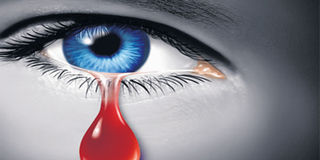Take issue of shelters, safe houses for abuse victims more seriously

Drug abuse, early sexual debut, HIV/Aids and STIs, sexual abuse and violence are burdens that the average Kenyan adolescent has to worry about. Six out of every 10 new drug addicts in Mombasa, who inject themselves, are children and may be HIV positive, the National Aids Control Council (Nacc) has said. GRAHIC | NATION
What you need to know:
- We must all stand with and support those among us who offer not only physical shelters, safe houses and alternative accommodation to abused and violated women and girl but also give them opportunities to heal and pick up their lives.
- Both levels of government need to prioritise safe houses and shelters in their budgets and planning.
- Some people have argued against alternative accommodation for SGBV survivors, equating it to anticipating and encouraging the crime.
- But that is akin to living in denial. SGBV is rampant and it is time we awoke and protected the survivors and prevented the vice.
I first saw her photos, taken at a health facility in Nairobi that treats, protects and cares for mostly women and girls, victims of sexual and gender-based violence. The sight of the little girl lying unconscious on that bed with dry blood caked on her clothes, legs and on the floor was disconcerting and devastating. It disturbed me for weeks and occasionally haunts me.
A few hours before she was wheeled into the hospital ward, she had been sexually assaulted by her uncle — the husband of her mother’s sister in whose house she lived following the death of her mother — and had been rescued by neighbours. She had been badly injured by the defiler, who took off in the company of his wife after his despicable act was discovered.
Apparently, he is still at large.
A week after she left hospital, I visited her at a safe house that is now her home. The little bundle of misery was deeply traumatised. For weeks, I visited and followed up on her progress. That was early last year. I visited her again recently.
And alas! I could not recognise her. I was looking at a bubbly eight-year-old girl, really playful and jolly! I was excited. She seemed to have overcome the horrible experience and trauma. She has a mother and many siblings. And she loves her school and friends, she told me as she ran off “to swing”.
My point? This safe house, which gives shelter to abused girls and young women, is not just a physical structure but a home — if the much it has nurtured little Lilly is anything to go by. It is at this sanctuary for healing, a home full of love, that Lilly will rise from and, hopefully, live a full life, even as we pray that the monster who violated her, or another for one that matter, will not show up again to destroy her.
Fast-forward to Covid-19. Sixteen-year old Celestine is now two weeks old at the same shelter. She was recently rescued from a quarry in the neighbourhood of Nairobi. Because of the difficult work that she was subjected to — digging up and breaking stones, daily, since March, following the Covid-19-instigated school closure — she developed muscles on her arms and chest that gave her the appearance of a young man. A close relative is said to be responsible for the abuse against the orphaned girl.
A volunteer child officer recently rescued Celestine and, from a conversation I had with the shy teenager, she is happier.
I give these two examples to demonstrate how critical it is during this difficult period to offer protection against all manner of SGBV by embracing shelters, safe houses and access to temporary accommodation and alternative lodging for women and girls victims as well as to other vulnerable people.
There has been an impassioned discussion in the past 100 days or so, when it became clear that SGBV, mainly against women and girls, had reared its ugly head to become a ‘shadow pandemic’ not just in Kenya but also globally. One consequence is the many pregnant minors — never mind the denials and blame games.
Both levels of government need to prioritise safe houses and shelters in their budgets and planning. Some people have argued against alternative accommodation for SGBV survivors, equating it to anticipating and encouraging the crime. But that is akin to living in denial. SGBV is rampant and it is time we awoke and protected the survivors and prevented the vice.
A current report by the United Nations Office for the Coordination of Humanitarian Affairs, (Unocha), Southern and Eastern Africa, shows that 2,350 women and girls in Kenya need protection from SGBV and female genital mutilation/cut (FGM/C), rampant despite vigilance by the government, interest groups and others.
We must all stand with and support those among us who offer not only physical shelters, safe houses and alternative accommodation to abused and violated women and girl but also give them opportunities to heal and pick up their lives.
Ms Rugene is a consulting editor and founder, The Woman’s Newsroom Foundation. [email protected] @nrugene





